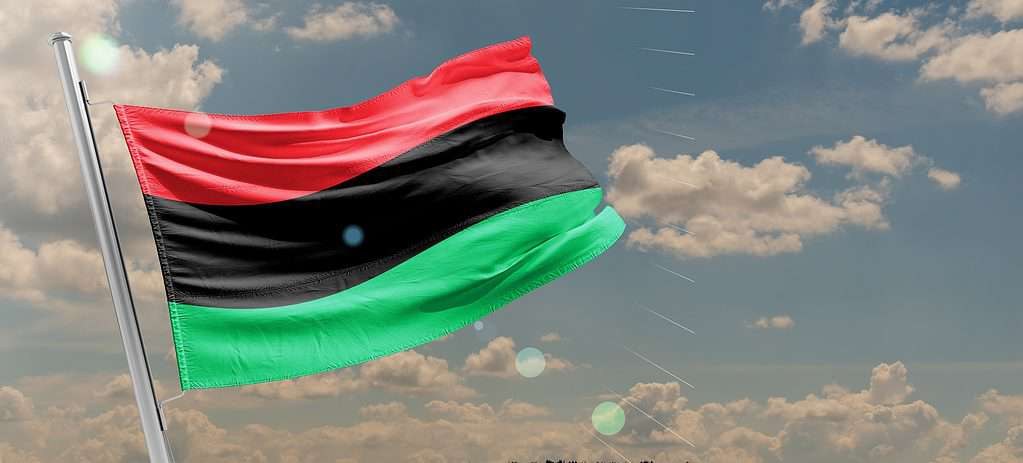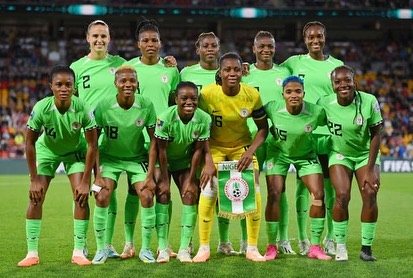Developed in 1920, the Pan-African flag symbolizes the African Diaspora and black liberation in the United States.
The Black Liberation Flag, the UNIA Flag, and the Afro-American Banner are other names for it. It’s occasionally referred to as the “Marcus Garvey flag” because it was created to represent Black Americans’ freedom, pride, and political power.
Become an insider. Subscribe to our newsletter for more top trending stories like this!
The Pan-African Flag was created to give Black people in the U.S. and around the world a symbol of unity. The colors are Green, Black and Red.
The Pan-African Flag’s red color symbolizes the blood that binds all members of the Black African ethnic group together and the bloodshed in support of Black liberation.
Similarly, the black color depicts black people’s skin and symbolizes the black community’s power.
As for the color green, it stands for the continent of Africa’s fertility. It speaks of youth, hope, and the rich and diverse natural resources of Africa, the Motherland.
Thus, the combination of these three hues symbolizes the spirit of Black Americans—a vibrant, oddball people forging a community, a place they can call home, and an oppression-free society.
People Also Read: Black Culture: 5 Interesting West African Legends
Why Some African Nations Have Adopted the Pan-African Colors
The Pan-African colors have been used as a sign of sovereignty and unification by a number of African countries since they were first established. Numerous Black organizations that continue the struggle for justice and liberation for Black people have also embraced it.
The Ethiopian flag was created by Emperor Menelik II on October 11, 1897, a year after Ethiopia soundly defeated the Kingdom of Italy at the Battle of Adwa. The Ethiopian flag has gold or yellow hues which stands for peace and harmony; this is connected to pan-African solidarity.
Since the 1969 student takeover of what had been a men’s dorm, Mill’s House, the New Africa House on the University of Massachusetts campus proudly displays the Pan-African Flag as the color of its prominent front door.
The History of the Pan-African Flag
The Pan African Flag was also called the Universal Negro Improvement Association and African Communities League (UNIA) flag, the Afro-American flag, and the Black Liberation flag. It’s sometimes referred to as the “Marcus Garvey flag.”
Garvey was an active participant in Jamaican politics. He was professionally a journalist, a public speaker, and the founder of the UNIA. He established the UNIA to advance anti-colonialism and Black nationalism with the aid of friends and activists.
UNIA members like Garvey created the Pan-African flag as a direct response to the racist folk song “Every Race Has a Flag But the Coon.”
Become an insider. Subscribe to our newsletter for more top trending stories like this!
The flag would later represent African Americans’ unity and prove that they could rightfully be regarded as a single nation.
The Pan-African flag became a representation of the Black Liberation Movement in the 1960s.
How the Pan-African Flag Influences Black History
In the activism of black people, the Pan African Flag has played an important role in the history of Black Liberation and previous civil rights movements.
The flag is now a recognizable symbol across all cultures. It’s frequently portrayed at civil rights events, MLK Day parades, and other public gatherings. For instance, protests that featured the flag attracted considerable media attention because they were connected to rallies against the 2014 killing of Michael Brown by police.
The Pan-African flag is one of many recognized outside the United States. Many independent African nations, such as Kenya, Libya, and Malawi, created their own flags in the late 20th century, using the Pan-African colors as a model.
Colors from the flag are also incorporated into Kwanzaa, Juneteenth, and other Black American holidays‘ decorations and symbolism.
People Also Read: Slave Ship Rebellions: Africans’ Journey to Slavery Through the Seas
Pan-African colors first appeared in the early 20th century as a response to colonialism and oppression. Interestingly, they have profound historical and cultural significance beyond simple aesthetics.
The colors have become potent visual representations of African Americans’ unity. Together, they represent a common story of struggle, liberation, and a black community’s will to triumph over hardship.
You can buy the Pan African Flag on Amazon; you can choose the nylon, mini decoration or embroidery.
Spotcovery offers unique and fresh daily content on Black culture, lifestyle, and experiences. We talk about everything black, black people, black-owned and black-owned businesses. We also deliver authentic and relevant content that will inform, inspire, and empower you! The future of black media is critical to today’s black experience! Our primary audience includes African Americans, Africans, Afro-Caribans, and people of African heritage. Black culture is for the culture!
Become an insider. Subscribe to our newsletter for more top trending stories like this!





